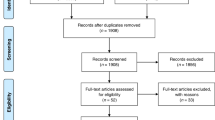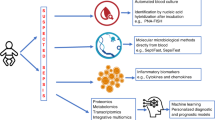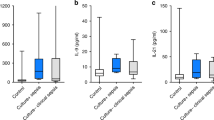Abstract
Objective:
To perform a quantitative review of the evidence on the diagnostic value of inflammatory markers in maternal serum or umbilical cord blood for the diagnosis of early-onset neonatal sepsis (EONS).
Study Design:
We searched multiple databases for studies published through March 2013 that evaluated the diagnostic performance of procalcitonin (PCT), C-reactive protein (CRP) and interleukin-6 (IL-6), and leukocyte count (white blood cell, WBC) in either umbilical cord blood or maternal serum for diagnosis of EONS. We summarized test performance characteristics with the use of forest plots, hierarchical summary receiver operating characteristic curves and bivariate random effects models.
Result:
Our search identified 3874 citations, of which 15 studies evaluating 2178 episodes of suspected neonatal infection were included for analysis. IL-6 in cord blood with a pooled-positive likelihood ratio (LR+) of 9.47 (95% confidence interval: 3.86 to 23.3), PCT in cord blood with a LR+ of 5.72 (1.56 to 21.0) and IL-6 in maternal serum with a LR+ of 5.47 (2.10 to 14.2) can be qualified as a valid rule-in test. IL-6 in cord blood with a LR− of 0.10 (0.05 to 0.21) and PCT in cord blood with a LR− of 0.20 (0.12–0.37) can be qualified as a useful rule-out test. Either CRP or WBC was inadequate for diagnosis of EONS.
Conclusion:
For cord blood sample, IL-6 or PCT can be used as reliable rule-in and rule-out tool. For maternal serum, only IL-6 appeared to be sufficient for rule-in diagnosis. An interventional study may be needed to answer whether the addition of these tests will improve the outcome of patients with EONS.
This is a preview of subscription content, access via your institution
Access options
Subscribe to this journal
Receive 12 print issues and online access
$259.00 per year
only $21.58 per issue
Buy this article
- Purchase on Springer Link
- Instant access to full article PDF
Prices may be subject to local taxes which are calculated during checkout


Similar content being viewed by others
References
Koenig JM, Keenan WJ . Group B streptococcus and early-onset sepsis in the era of maternal prophylaxis. Pediatr Clin North Am 2009; 56 (3): 689–708.
Stoll BJ, Hansen NI, Sanchez PJ, Faix RG, Poindexter BB, Van Meurs KP et al. Early onset neonatal sepsis: the burden of group B Streptococcal and E. coli disease continues. Pediatrics 2011; 127 (5): 817–826.
Lukacs SL, Schrag SJ . Clinical sepsis in neonates and young infants, United States, 1988-2006. J Pediatr 2012; 160 (6): 960–965 e961.
Mishra UK, Jacobs SE, Doyle LW, Garland SM . Newer approaches to the diagnosis of early onset neonatal sepsis. Arch Dis Child Fetal Neonatal Ed 2006; 91 (3): F208–F212.
Christensen RD, Baer VL, Gordon PV, Henry E, Whitaker C, Andres RL et al. Reference ranges for lymphocyte counts of neonates: associations between abnormal counts and outcomes. Pediatrics 2012; 129 (5): e1165–e1172.
Chiesa C, Natale F, Pascone R, Osborn JF, Pacifico L, Bonci E et al. C reactive protein and procalcitonin: reference intervals for preterm and term newborns during the early neonatal period. Clin Chim Acta 2011; 412 (11-12): 1053–1059.
Buttery JP . Blood cultures in newborns and children: optimising an everyday test. Arch Dis Child Fetal Neonatal Ed 2002; 87 (1): F25–F28.
Chiesa C, Pellegrini G, Panero A, Osborn JF, Signore F, Assumma M et al. C-reactive protein, interleukin-6, and procalcitonin in the immediate postnatal period: influence of illness severity, risk status, antenatal and perinatal complications, and infection. Clin Chem 2003; 49 (1): 60–68.
Chiesa C, Osborn JF, Pacifico L, Natale F, De Curtis M . Gestational- and age-specific CRP reference intervals in the newborn. Clin Chim Acta 2011; 412 (19-20): 1889–1890.
Joram N, Boscher C, Denizot S, Loubersac V, Winer N, Roze JC et al. Umbilical cord blood procalcitonin and C reactive protein concentrations as markers for early diagnosis of very early onset neonatal infection. Arch Dis Child Fetal Neonatal Ed 2006; 91 (1): F65–F66.
Howman RA, Charles AK, Jacques A, Doherty DA, Simmer K, Strunk T et al. Inflammatory and haematological markers in the maternal, umbilical cord and infant circulation in histological chorioamnionitis. PloS ONE 2012; 7 (12): e51836.
Leeflang MM, Deeks JJ, Gatsonis C, Bossuyt PM . Systematic reviews of diagnostic test accuracy. Ann Int Med 2008; 149 (12): 889–897.
Whiting P, Rutjes AW, Reitsma JB, Bossuyt PM, Kleijnen J . The development of QUADAS: a tool for the quality assessment of studies of diagnostic accuracy included in systematic reviews. BMC Med Res Methodol 2003; 3: 25.
Reitsma JB, Glas AS, Rutjes AW, Scholten RJ, Bossuyt PM, Zwinderman AH . Bivariate analysis of sensitivity and specificity produces informative summary measures in diagnostic reviews. J Clin Epidemiol 2005; 58 (10): 982–990.
DerSimonian R, Laird N . Meta-analysis in clinical trials. Control Clin Trials 1986; 7 (3): 177–188.
Lijmer JG, Bossuyt PM, Heisterkamp SH . Exploring sources of heterogeneity in systematic reviews of diagnostic tests. Stat Med 2002; 21 (11): 1525–1537.
Cancelier AC, Petronilho F, Reinke A, Constantino L, Machado R, Ritter C et al. Inflammatory and oxidative parameters in cord blood as diagnostic of early-onset neonatal sepsis: a case-control study. Pediatr Crit Care Med 2009; 10 (4): 467–471.
Cernada M, Badia N, Modesto V, Alonso R, Mejías A, Golombek S et al. Cord blood interleukin-6 as a predictor of early-onset neonatal sepsis. Acta Paediatr 2012; 101 (5): e203–e207.
Gulati S, Bhatnagar S, Raghunandan C, Bhattacharjee J . Interleukin-6 as a predictor of subclinical chorioamnionitis in preterm premature rupture of membranes. Am J Reprod Immunol 2012; 67 (3): 235–240.
Hatzidaki E, Gourgiotis D, Manoura A, Korakaki E, Bossios A, Galanakis E et al. Interleukin-6 in preterm premature rupture of membranes as an indicator of neonatal outcome. Acta Obstet Gynecol Scand 2005; 84 (7): 632–638.
Janota J, Stranak Z, Belohlavkova S, Mudra K, Simak J . Postnatal increase of procalcitonin in premature newborns is enhanced by chorioamnionitis and neonatal sepsis. Eur J Clin Invest 2001; 31 (11): 978–983.
Kayem G, Goffinet F, Batteux F, Jarreau PH, Weill B, Cabrol D . Detection of interleukin-6 in vaginal secretions of women with preterm premature rupture of membranes and its association with neonatal infection: a rapid immunochromatographic test. Am J Obstet Gynecol 2005; 192 (1): 140–145.
Kordek A, Giedrys-Kalemba S, Pawlus B, Podraza W, Czajka R . Umbilical cord blood serum procalcitonin concentration in the diagnosis of early neonatal infection. J Perinatol 2003; 23 (2): 148–153.
Kordek A, Halasa M, Podraza W . Early detection of an early onset infection in the neonate based on measurements of procalcitonin and C-reactive protein concentrations in cord blood. Clin Chem 2008; 46 (8): 1143–1148.
Lewis DF, Barrilleaux PS, Wang Y, Adair CD, Baier J, Kruger T . Detection of interleukin-6 in maternal plasma predicts neonatal and infectious complications in preterm premature rupture of membranes. Am J Perinatol 2001; 18 (7): 387–391.
Pfeiffer KA, Reinsberg J, Rahmun A, Schmolling J, Krebs D . Clinical application of maternal serum cytokine determination in premature rupture of membranes—interleukin-6, an early predictor of neonatal infection? Acta Obstet Gynecol Scand 1999; 78 (9): 774–778.
Popowski T, Goffinet F, Maillard F, Schmitz T, Leroy S, Kayem G . Maternal markers for detecting early-onset neonatal infection and chorioamnionitis in cases of premature rupture of membranes at or after 34 weeks of gestation: a two-center prospective study. BMC Preg Childbirth 2011; 11: 26.
Torbe A . Maternal plasma procalcitonin concentrations in pregnancy complicated by preterm premature rupture of membranes. Mediators Inflamm 2007; 2007: 35782.
Torbe A, Czajka R . Are vaginal fluid procalcitonin levels useful for the prediction of subclinial infection in patients with preterm premature rupture of membranes? J Obstet Gynaecol Res 2005; 31 (5): 464–470.
Torbe A, Czajka R, Kordek A, Rzepka R, Kwiatkowski S, Rudnicki J . Value of vaginal fluid proinflammatory cytokines for the prediction of early-onset neonatal infection in preterm premature rupture of the membranes. J Interferon Cytokine Res 2007; 27 (5): 393–398.
van der Heyden JL, van Teeffelen SS, Coolen AC, Halbertsma FJ, Aardenburg R, Mertens HJ et al. Is it useful to measure C-reactive protein and leukocytes in patients with prelabor rupture of membranes? Am J Perinatol 2010; 27 (7): 543–547.
Shahkar L, Keshtkar A, Mirfazeli A, Ahani A, Roshandel G . The role of IL-6 for predicting neonatal sepsis: a systematic review and meta-analysis. Iran J Pediatr 2011; 21 (4): 411–417.
Cotten CM, Taylor S, Stoll B, Goldberg RN, Hansen NI, Sánchez PJ et al. Prolonged duration of initial empirical antibiotic treatment is associated with increased rates of necrotizing enterocolitis and death for extremely low birth weight infants. Pediatrics 2009; 123 (1): 58–66.
Halkin A, Reichman J, Schwaber M, Paltiel O, Brezis M . Likelihood ratios: getting diagnostic testing into perspective. QJM 1998; 91 (4): 247–258.
Cordero L, Ayers LW . Duration of empiric antibiotics for suspected early-onset sepsis in extremely low birth weight infants. Infect Control Hosp Epidemiol 2003; 24 (9): 662–666.
Kuppala VS, Meinzen-Derr J, Morrow AL, Schibler KR . Prolonged initial empirical antibiotic treatment is associated with adverse outcomes in premature infants. J Pediatr 2011; 159 (5): 720–725.
Author information
Authors and Affiliations
Corresponding authors
Ethics declarations
Competing interests
The authors declare no conflict of interest.
Rights and permissions
About this article
Cite this article
Su, H., Chang, SS., Han, CM. et al. Inflammatory markers in cord blood or maternal serum for early detection of neonatal sepsis—a systemic review and meta-analysis. J Perinatol 34, 268–274 (2014). https://doi.org/10.1038/jp.2013.186
Received:
Revised:
Accepted:
Published:
Issue Date:
DOI: https://doi.org/10.1038/jp.2013.186
Keywords
This article is cited by
-
Early-onset sepsis risk calculator: a review of its effectiveness and comparative study with our evidence-based local guidelines
Italian Journal of Pediatrics (2021)
-
Soluble TREM-1 as a predictive factor of neonatal sepsis: a meta-analysis
Inflammation Research (2018)
-
Cord blood neutropenia is an independent predictor of early sepsis
Journal of Perinatology (2017)
-
Diagnostics for neonatal sepsis: current approaches and future directions
Pediatric Research (2017)



